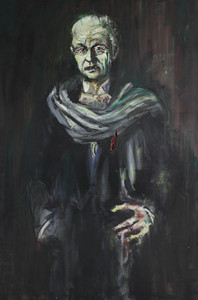Dear IFTR,
with the beginning of April, we are quickly approaching the IFTR, and in the coming weeks, we will start sharing more and more details about the conference.
Thus, we will begin sending the newsletter to all participants, as it is the only way for us to ensure that our information reaches every participant. (This also applies to responses – we try to centralise them to one email address.) Please also note that past editions of the newsletter can still be found on our website.
We would also like to remind you about the early-bird registration, which expires at the end of the month.
April Fools’ Day – a custom that is also very common in Germany – was a bit of a challenge this year – ‘real’ and staged madness and pranks have become hard to distinguish…
But it also provided this week’s Cologne Curiosity: The press office of Cologne Cathedral announced that archaeological excavations under the cathedral had discovered a mosaic from late antiquity—depicting the Cologne trifolium (more on that soon), the three symbolic figures representing Cologne’s Carnival. Thus, the dispatch claimed, it was now proven that Cologne is the birthplace of Carnival… They even produced a corresponding AI-generated image—proving just how powerful wishful thinking can be!
Don’t miss our Fool of the Week, presented by my colleague Gerald Köhler.
Everything bright, joyful, and exuberant usually has its dark counterpart between which lies metamorphosis. In his painting Hein Heckroth portrayed Dorian from Wilde’s novel, depicting the result of his bodily transformation. Although the character remains outstandingly beautiful in form and face, he becomes increasingly evil on the inside. Only death makes his face turn into the ugly grimace that his portrait revealed before in a gradual morphing that combines the character and reality making them identical. This illustrates death at the ball of life, the carnival of illusion—the end of deception. The portrait in Wilde’s text documents the progression of Dorian’s corruption. The final metamorphosis occurs suddenly in the living model. The painting clearly shows the stab wound that the horrified protagonist inflicted upon his painted likeness, thereby killing himself. (Gerald Köhler)
Have a great week!
Peter W. Marx
on behalf of the Cologne Team

